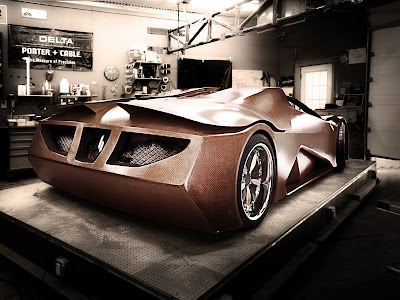
Most adaptations of existing cars result in some sort of loss, once these vehicles were not meant to perform their new functions. In Mini's case, the back seats are gone in favour of a large package of lithium-ion batteries (5,088 cells that have been grouped into 48 modules). This is not due only to lack of space, but also for a better weight distribution. If Mini E used four electric engines (one in each wheel) instead of only one, under the bonnet, as a regular engine, batteries could have been placed in the front end of the car, but BMW has chosen a more conservative arrangement.
These batteries can provide Mini E with 35 Kwh and 380V as direct current. This is enough for a top speed of 152 km/h (electronically limited) and 240 km of range. The 204 bhp electric engine can also sprint Mini E from 0 to 100 km/h in 8.5 s. Mini E could do better if it was not so heavy: 1,465 kg.
The gas pedal works also as a brake. When it is not pressed, the engine works as a generator and brakes the car, what helps improve car range in about 20%.
Besides having only a 500-unit run (with the car serial number printed in its side fender, close to side indication lights), Mini E will be sold to private clients and corporations only in California, USA. Sales in Europe are also under careful consideration, but will also have a limit. All of them will be leased by the end of 2008. Their owners may stay with the car for up to two years. When this period ends, all Mini E cars will get back to BMW for more studies and possibly a regular all-electric car soon afterwards. Possibly with at least four places and sales to other places all over the world.














Source: BMW







































